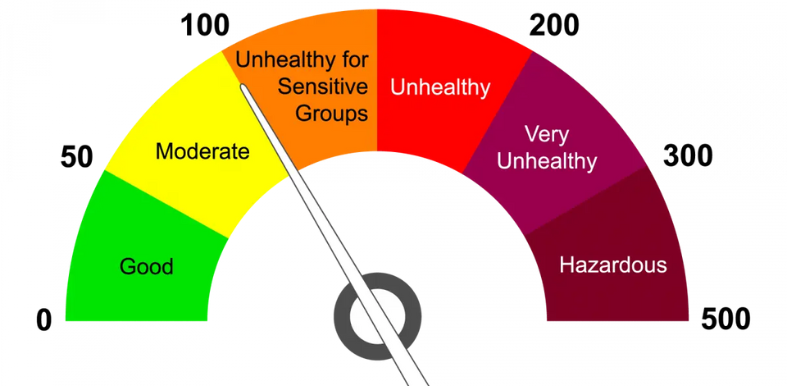Why Shimla, Dharamshala AQI has fallen below some Himachal industrial hubs this summer?

- Pre Paragliding World Cup Kicks Off in Bir Billing Valley, 105 Pilots from 32 Countries Competing - November 2, 2024
- Diwali business: HRTC earns record revenue - November 2, 2024
- Interest-Free Aid from Center Boosts Chandigarh-Baddi Rail Line Project - November 2, 2024
The climate crisis in Himachal Pradesh is getting worse, with recent forest fires and industrial activities significantly degrading air quality in key tourist destinations. Shimla and Dharamshala, often heralded as pristine retreats, have reported air quality index (AQI) worse than several industrial areas, including Nalagarh and Kala Amb.
Slipping to ‘satisfactory’ from ‘good’
Previously enjoying a ‘good’ AQI status, both Shimla and Dharamshala have now slipped into the ‘satisfactory’ zone. Current readings show Dharamshala with an AQI of 98 and Shimla at 97. In stark contrast, industrial hubs such as Nalagarh, Barotiwala, Damtal and Kala Amb have reported AQIs of 83, 98, 79 and 75, respectively.
Other parts of Himachal Pradesh have healthier air quality. Sundernagar and Parwanoo both reported AQIs of 46, and Manali records the best at 41. However, Baddi, Una and Paonta Sahib have experienced a downturn, with their AQIs now in the ‘moderate’ range. Baddi, in particular, has faced significant fluctuations, plunging into the ‘poor’ category with an AQI of 213 on May 17. Subsequent days saw a gradual improvement to 171 on May 18, 167 on May 19, 150 on May 20 and 144 on May 21. Currently, Paonta Sahib and Una report AQIs of 136 and 106, respectively.
Forest fires take toll on ecology
The deteriorating air quality is largely attributed to recent forest fires, which have released vast amounts of smoke into the atmosphere, adversely affecting surrounding regions. Additionally, Baddi, known as Asia’s largest pharmaceutical hub, contributes significantly to air pollution due to its industrial activities. Recent fires around the Baddi-Barotiwala-Nalagarh area have further exacerbated the situation.
Air quality categorisation standards classify an AQI of 0-50 as ‘good’, 51-100 as ‘satisfactory’, 101-200 as ‘moderate’, and 201-300 as ‘poor’. With Baddi’s AQI having reached the ‘poor’ zone, residents face respiratory difficulties and other health risks.




